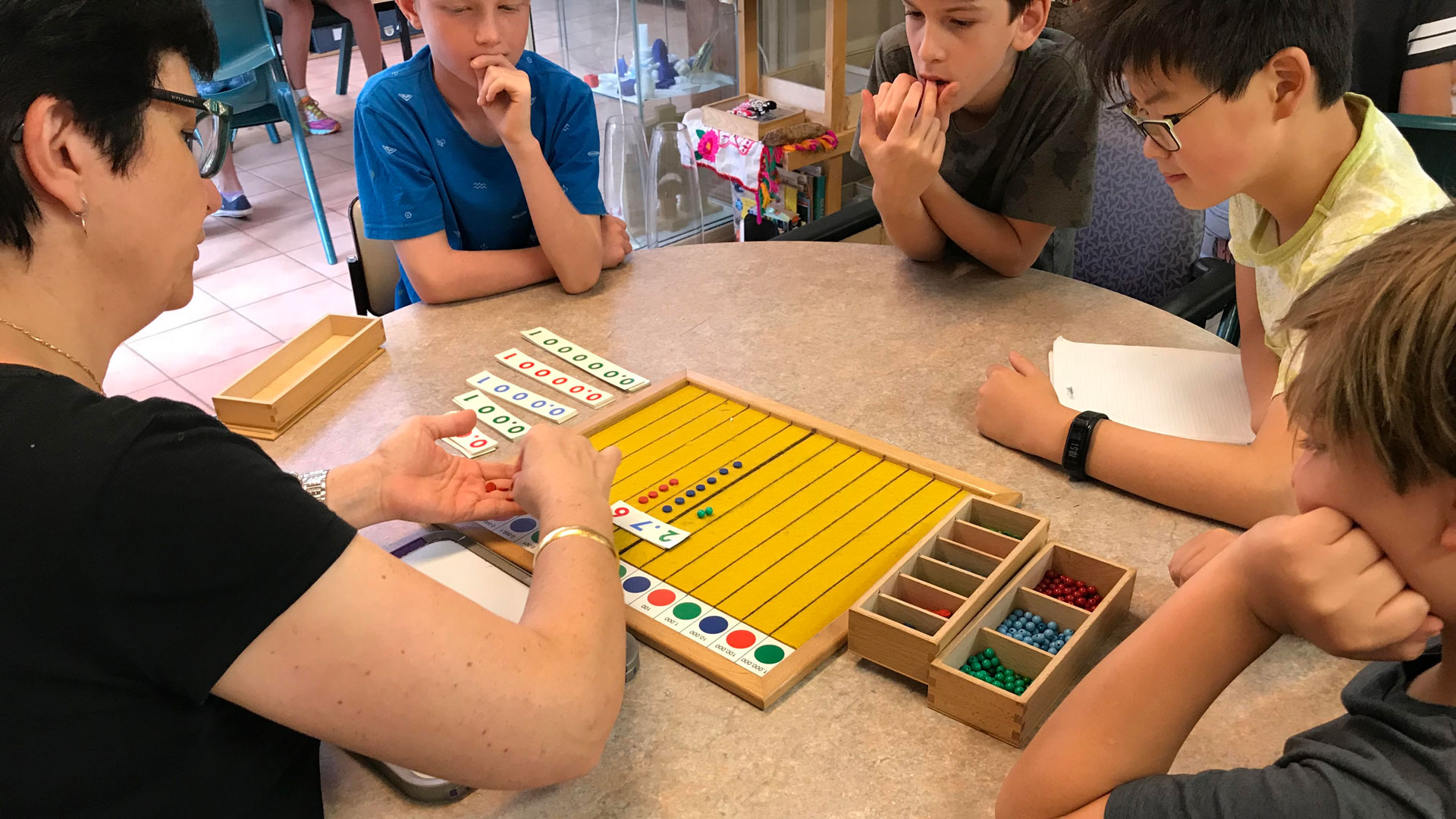
03 Apr 3 Montessori Myths Busted
Developed by Dr. Maria Montessori over 100 years ago, the Montessori method of education still raises some eyebrows among those only familiar with traditional classrooms. Here we debunk three myths about Montessori education to help you decide whether it’s the best approach for your family.
Montessori Classrooms Are Chaos
The idea that Montessori schools are a free-for-all is a misinterpretation of the importance Montessori programs place on each student’s freedom and catering to individual learning needs. Montessori educators understand the developmental needs of children and deliver appropriately timed lessons at the point of need. Through the arrangement, beauty and appeal of the prepared learning environment, materials and lessons, students engage in purposeful work which respects their need to ‘talk and walk’ as they engage socially with others as they need to.
Discipline develops naturally as children learn with others in our mixed-aged learning environments. They learn the ‘grace and courtesy’ of the mini-society by engaging with others throughout the daily work cycle.
Dr Montessori’s studies on children and education found that children are naturally eager for knowledge when the environment is supportive. By thoughtfully preparing the learning environment, children are free to engage with their education more fully.
The Teacher Does Nothing
While there may be no teacher up front, broadcasting lesson content like in a conventional classroom, Montessori educators are very much engaged with their students. Having a mixed age range of students in the class for three years, Montessori educators know students very well. Throughout the day, lessons are given to individuals and small groups. Using the scientifically designed ‘hands-on’ materials, the Montessori educator assists the students to make connections between concrete and abstract ideas. After a lesson, the students are free to practice or pursue other purposeful work of interest. The Montessori educator also spends time observing the students. This informs when and what the next lessons will be, and when to interact with the students.
Students Need Formal Structure to Learn
Rather than trying to force children into a rigid timetable that might not support their own interests and energy levels, Montessori classrooms are adaptive in order to encourage full engagement in tasks. Children are given a three-hour uninterrupted work cycle in the morning. During this time, they are invited to lessons, or are free to choose what they work on, and move about the room if they need to. As a result, children are never bored in classrooms that are hands-on, self-paced, collaborative and joyful. By encouraging initiative, and not distracting students from information that engages their interests, Montessori classrooms give the gift of lifelong learning and doing. Dr Montessori believed education was for life and for creating world peace.
“One test of the correctness of educational procedure is the happiness of the child.”
– Dr Maria Montessori
This article was sponsored by Forestville Montessori School. Located in Sydney’s northern suburbs, Forestville Montessori School is a Birth to age 12 program building an academic foundation for each child to excel. AMI trained Montessori teachers to support children’s natural development, building capacity to become productive, fulfilled adults who contribute to the world.
Photography from InFocus Edition 3.

